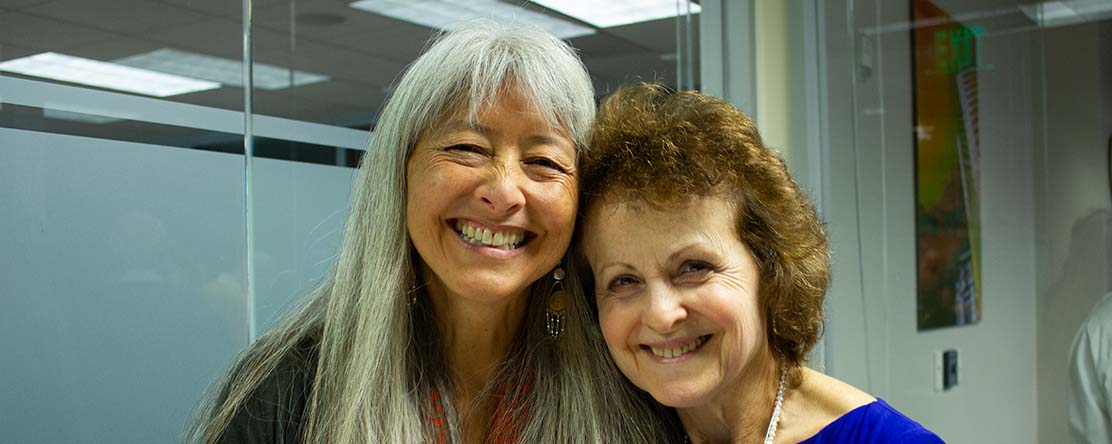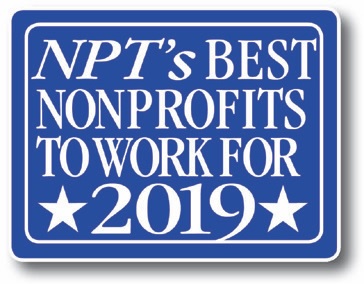
In the News
Flexibility, Benefits And Feeling Appreciated Key Top Nonprofits


One thing we’re big on here is data analytics,” said Eric Dill, senior vice president, human resources, at American Arbitration Association (AAA). Just don’t call it “Moneyball” for nonprofits.
“We may have great ideas but we need to sell that to a wide group of individuals,” he said. Senior executives and leadership have a global view while finance executives focus on whether it demonstrates actual cost savings. “They can analyze data all they want; it’s the actionable side of it,” Dill said.
The New York City-based nonprofit focused on alternative dispute resolution was among a number of organizations that secured a spot in the 2019 Best Nonprofits To Work For in its first year of participation in the 11th annual national study. AAA ranked No. 49 overall and fifth among large organizations (250 employees or more).
AAA has added predictive analytics to its recruitment and hiring process, using Berke Assessment, a web-based tool for final candidates to assess their cognitive and personal traits, mapped to the job role.
“We don’t rely on it totally… but to identify high-potential employees,” Dill said. “We know who the high performers are, but it’s also a tool to say, maybe you didn’t consider this employee for this role,” he said.
All employees receive performance reviews but in some recent cases analytics have enabled AAA to identify current employees for promotional opportunity who might not have otherwise been obvious for consideration. “It gave us different insight,” Dill said. He pointed to one candidate who was recently promoted. Their skills and natural ability correlated well to a promotion but if interviewed, they might come off as quiet or reticent. “Sometimes they don’t interview well but otherwise they’re quite strong,” Dill said.
Data analytics help with both recruitment as well as retention, a primary focus for AAA.
While AAA participated in the Best Nonprofits survey for the first time, other organizations returned to the list after a few years off, including this year’s topranked nonprofit, NOWCC, Inc. The National Older Worker Career Center (NOWCC) also earned the No. 1 ranking when it last participated, in 2014 and 2015.
Someone at another association was reading the April 2014 issue of The NonProfit Times, saw that NOWCC was among the Best Nonprofits and started applying for jobs there, according to German “Cito” Vanegas, president and CEO. “We didn’t have anything that matched her skills set” at the time, Vanegas said, but she ended up joining the Arlington, Va.-based organization by 2016.
The 2019 Best Nonprofits to Work For report was dominated by small organizations (15 to 49 employees) and medium nonprofits (50 to 249 employees). Eighteen small organizations made the top 50, including No. 1 overall and five of the top 10. Medium organizations accounted for more than half of the list, at 27, including 11 of the top 20.
The Downtown Streets Team finished No. 15 overall and No. 7 in the medium-sized organizations category.
The top 10 key drivers identified in the survey were:
- I feel I am valued in this organization;
- Most days, I feel I have made progress at work;
- I have confidence in the leadership of this organization;
- I like the type of work that I do;
- I can trust what this organization tells me;
- I like the people I work with at this organization;
- Quality is a top priority with this organization;
- Overall, I’m satisfied with this organization’s benefits package;
- I understand the long-term strategy of this organization; and,
- My supervisor helps me develop to my fullest potential.
The NonProfit Times again partnered with Best Companies Group (BCG) on the 2019 Best Nonprofits To Work For. The Harrisburg, Pa.-based firm puts organizations through a battery of surveys to develop the key drivers. The Employee Benchmark Report portion of the survey includes 79 questions and statements within eight categories, with the percentage of respondents noted for answering “Agree Somewhat” or “Agree Strongly.”
Organizations that were recognized as the Best Nonprofits To Work For scored an average 90 percent positive responses overall while those that participated in the survey but did not rank among the top 50 scored 82 percent on average.
Many organizations use the survey data to gauge their own operations and garner employee feedback. Both previous times that Public Health Institute (PHI) participated in the Best Nonprofits To Work For, human resources staff used the results to make recommendations about new programs or initiatives, according to Valerie McCann Woodson, vice president of human resources.
“When we started this process, it was not with the idea that we’d win but that we’d learn about our organization and how we can continue to improve,” she said. “We are a continuous learning organization — research is in our backbone — we follow through on that,” she said.
“We identified some metrics for ourselves to monitor on a regular basis: where are we, are we improving in certain areas,” said Mary Pittman, chief executive officer (CEO) of Oakland, Calif based PHI, which ranked No. 48 overall and fourth among large organizations.
“The voice of employees is important to us, where we want to improve upon, or even what we would like to offer them as a benefit or ways they can be more effective in their work,” she said.
PHI has monthly meetings to monitor its survey and progress. After one survey Pittman said staff wanted more professional development opportunities so PHI launched a new management training certificate program. Since 2017, more than 80 employees have participated, including nearly 20 who have earned the certificate.
The No. 1 organization, NOWCC, works to get all employees certified in their position through outside education. There’s a strategic work plan with clear expectations, Vanegas said, with progress for all staff and courses are paid 100 percent by NOWCC.
“Feedback from the survey gives us things to work on. It’s not just to get an award,” Pittman said. “We’re doing it because we believe if we take care of our employees first, it allows us to do our work, and to be a great place to work,” she said.
PHI has always had strong benefits and employees appreciate that, Woodson said, but some tweaks came out of the survey results as they continue to improve communications and make these offerings around professional development.
“As a public health, health-driven organization, we do everything we can to try to help our employees stay healthy and focus on prevention and wellness,” Pittman said.
PHI covers 100 percent of employee premiums for medical and dental insurance but Pittman stressed it goes beyond medical care. That’s why it’s called Wellness360. The organization invested $500 in wellness rooms at each of its four major offices. Employees wanted to have a place to go where they can take a moment for themselves. The room includes a sofa, artwork, yoga mat, refrigerator and fountain. There’s also a stress reducer kit, which includes such things as sketch books or a stress ball that employees can bring back to their desk.
Since sitting is considered the new smoking when it comes to heart disease, workplaces have jumped on the trend of standing desks for employees. AAA piloted a standing desk program almost two years ago before implementing it last year. “It’s gone over well,” Dill said, admitting that he was skeptical at first because of some “low cubicle environments” that might disrupt workplace neighbors. “If anything, it’s helped to create an even greater sense of community,” he said.
“The issue we have is if we can get our hands on one. It’s an item that has to be budgeted,” Dill said.
In addition to physical well-being of employees, Best Nonprofits educate staff to keep financial well-being top of mind. “We believe that having good benefits and a strong salary is important but also supporting people in their financial literacy and well-being,” Pittman said. PHI has implemented a three-part retirement education series around financial wellness and free financial counseling. “People who are near retirement and those not close but curious have taken advantage,” she said. Pittman said the real proof is that PHI provides 10 percent of an employee’s salary toward a 403(b) retirement plan as a standard benefit for all employees, who become eligible after six months with the organization.
There is no vesting requirement nor a requirement for employees to contribute but through education and communications, PHI encourages contributions. That’s paid off as 74 percent of eligible employees make voluntary contributions to their plans, according to Woodson.
Staff members have contributed $17.7 million while PHI has contributed $22.3 million during the past five years. “We see that as a way to get people to take advantage of their generous benefits and leverage for the future,” Pittman said.
PHI sponsored a three-part seminar series last summer, “Transition to Retirement,” and offers access to its 403(b) administrator and account executive at all locations several times a year, and by appointment.
For a nonprofit, finances can fluctuate based on the economy, philanthropy or government contracts, Pittman said, but PHI has established those offerings as a priority. “What we have to do is put that as a baseline. The times would have to get really hard to cut those,” she said. “Employees are our number one asset, we wouldn’t able to do the work we do without incredible staff. We want to make sure we’re taking care of them as best we can,” Pittman said.
Financial education workshops, seminars or classes were a difference-maker among large nonprofits. Every large organization that made the Best Nonprofits list offered such programs compared with only 71 percent of large organizations that did not make the list. Overall, the percentage of nonprofits offering the programs was more even, about 55 percent, and also closer among other size categories.
Originally published by Nonprofit Times
More Updates
Work With Us
You change the world. We do the rest. Explore fiscal sponsorship at PHI.
Support Us
Together, we can accelerate our response to public health’s most critical issues.
Find Employment
Begin your career at the Public Health Institute.



